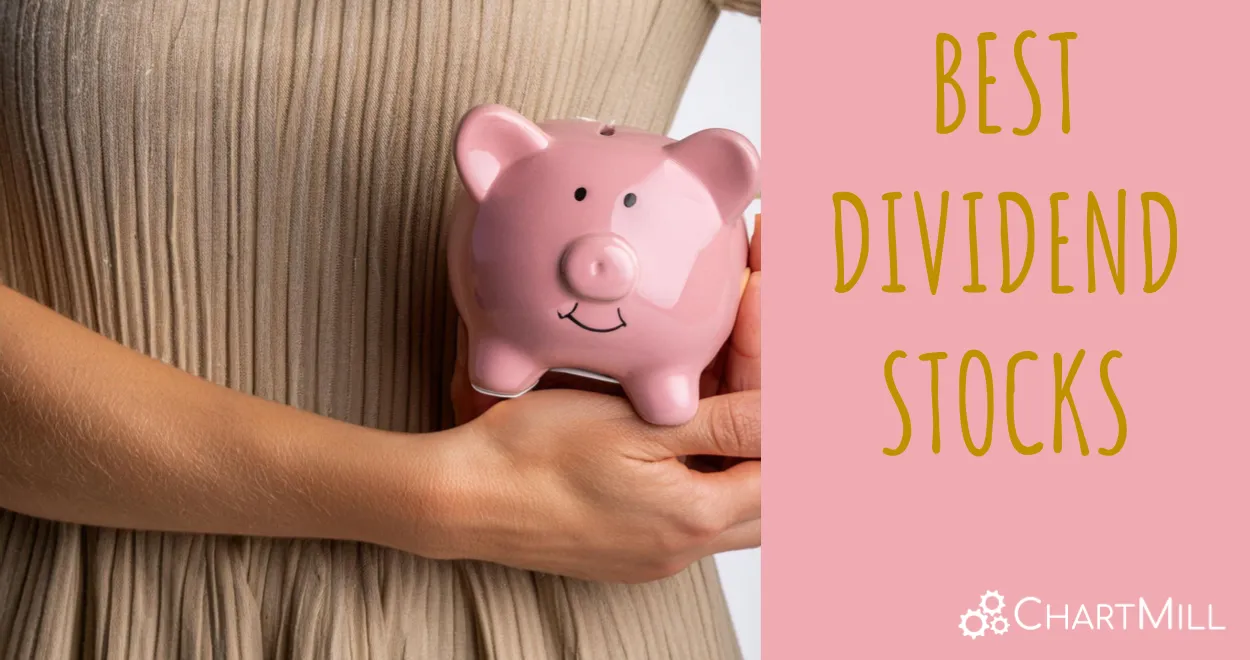Analyzing NYSE:STLA's Dividend Potential.
By Mill Chart
Last update: Jul 2, 2024
STELLANTIS NV (NYSE:STLA) is a hidden gem unveiled by our stock screening tool, featuring a promising dividend outlook alongside solid fundamentals. NYSE:STLA demonstrates decent financial health and profitability while ensuring a sustainable dividend. Let's break it down further.

How do we evaluate the Dividend for NYSE:STLA?
To gauge a stock's dividend quality, ChartMill utilizes a Dividend Rating ranging from 0 to 10. This comprehensive assessment considers various dividend aspects, including yield, history, growth, and sustainability. NYSE:STLA has achieved a 7 out of 10:
- STLA has a Yearly Dividend Yield of 8.36%, which is a nice return.
- STLA's Dividend Yield is rather good when compared to the industry average which is at 3.06. STLA pays more dividend than 100.00% of the companies in the same industry.
- Compared to an average S&P500 Dividend Yield of 2.38, STLA pays a better dividend.
- On average, the dividend of STLA grows each year by 386.64%, which is quite nice.
- STLA has been paying a dividend for over 5 years, so it has already some track record.
- 22.63% of the earnings are spent on dividend by STLA. This is a low number and sustainable payout ratio.
A Closer Look at Health for NYSE:STLA
ChartMill employs its own Health Rating for stock assessment. This rating, ranging from 0 to 10, is calculated by examining various liquidity and solvency ratios. In the case of NYSE:STLA, the assigned 7 reflects its health status:
- STLA has a better Altman-Z score (2.25) than 76.92% of its industry peers.
- STLA has a debt to FCF ratio of 2.43. This is a good value and a sign of high solvency as STLA would need 2.43 years to pay back of all of its debts.
- With an excellent Debt to FCF ratio value of 2.43, STLA belongs to the best of the industry, outperforming 94.87% of the companies in the same industry.
- STLA has a Debt/Equity ratio of 0.24. This is a healthy value indicating a solid balance between debt and equity.
- STLA has a Debt to Equity ratio of 0.24. This is in the better half of the industry: STLA outperforms 61.54% of its industry peers.
- The current and quick ratio evaluation for STLA is rather negative, while it does have excellent solvency and profitability. These ratios do not necessarly indicate liquidity issues and need to be evaluated against the specifics of the business.
Profitability Analysis for NYSE:STLA
ChartMill employs its own Profitability Rating system for stock evaluation. This score, ranging from 0 to 10, is derived from an analysis of diverse profitability metrics and margins. In the case of NYSE:STLA, the assigned 9 is noteworthy for profitability:
- STLA has a better Return On Assets (9.20%) than 92.31% of its industry peers.
- With an excellent Return On Equity value of 22.76%, STLA belongs to the best of the industry, outperforming 92.31% of the companies in the same industry.
- With an excellent Return On Invested Capital value of 15.22%, STLA belongs to the best of the industry, outperforming 94.87% of the companies in the same industry.
- STLA had an Average Return On Invested Capital over the past 3 years of 14.80%. This is above the industry average of 11.79%.
- The last Return On Invested Capital (15.22%) for STLA is above the 3 year average (14.80%), which is a sign of increasing profitability.
- STLA has a better Profit Margin (9.81%) than 89.74% of its industry peers.
- STLA's Profit Margin has improved in the last couple of years.
- STLA has a better Operating Margin (12.19%) than 97.44% of its industry peers.
- STLA's Operating Margin has improved in the last couple of years.
- With a decent Gross Margin value of 20.12%, STLA is doing good in the industry, outperforming 71.79% of the companies in the same industry.
- STLA's Gross Margin has improved in the last couple of years.
Our Best Dividend screener lists more Best Dividend stocks and is updated daily.
Our latest full fundamental report of STLA contains the most current fundamental analsysis.
Keep in mind
This is not investing advice! The article highlights some of the observations at the time of writing, but you should always make your own analysis and invest based on your own insights.
9.42
+0.09 (+0.96%)
Find more stocks in the Stock Screener
STLA Latest News and Analysis
 13 days ago - ChartmillMarket Monitor April 15 Before Market Open ( Dell, Palantir UP, Meta DOWN)
13 days ago - ChartmillMarket Monitor April 15 Before Market Open ( Dell, Palantir UP, Meta DOWN)Wall Street Starts Easter Week Strong as Tariff Concerns Ease
 17 days ago - ChartmillExploring STELLANTIS NV (NYSE:STLA)'s dividend characteristics.
17 days ago - ChartmillExploring STELLANTIS NV (NYSE:STLA)'s dividend characteristics.Is STELLANTIS NV (NYSE:STLA) a Good Fit for Dividend Investing?


